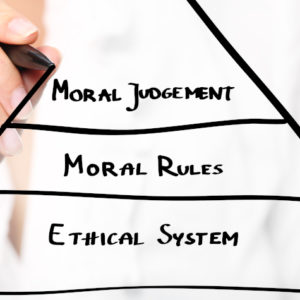Relating Faith in the Midst of Diversity to the Mission of God
Faith communities today encounter significant opportunities and challenges in pursuing their mission of redemption and reconciliation across social divides. The five approaches presented below—Incarnational Presence, Prophetic Advocacy, Reconciliatory Bridge-Building, Hospitality as Subversion, and Lament and Hope Practices—offer biblically-grounded frameworks for engaging with diverse population groups in ways that advance God’s redemptive purposes. Each approach draws from scriptural narratives where boundaries were crossed, injustices confronted, and new communities formed across significant social divides. Rather than offering abstract theories, these approaches provide practical applications that can transform both individuals and communities, creating spaces where genuine connection and mutual transformation become possible across differences of race, class, culture, and influence.
1. Incarnational Presence
This approach emphasizes being fully present with those who exist on society’s periphery, following Christ’s model of entering into human experience to bring redemption. Incarnational presence requires genuine engagement with different cultures and contexts rather than imposing external solutions. It recognizes that true transformation happens through authentic relationships where influence dynamics are acknowledged and dismantled. Just as God became flesh and “dwelt among us” (John 1:14), this approach calls believers to immerse themselves in the realities of those who experience social exclusion or disadvantage, listening deeply before speaking, and learning before teaching. This presence is characterized by humility, vulnerability, and a willingness to be changed by the encounter rather than merely seeking to change others.
Biblical Illustration
In first-century Palestine, deep ethnic and religious hostility existed between Jews and Samaritans. This animosity dated back to the Assyrian conquest (722 BCE) when the northern kingdom was conquered and foreigners settled in Samaria, leading to mixed marriages and religious practices that Jews considered impure. The Samaritans maintained their own version of the Pentateuch and worshipped on Mount Gerizim rather than in Jerusalem, deepening the religious divide. The hostility was so severe that many Jews would take the longer route between Judea and Galilee to avoid Samaritan territory altogether.
Women in this context faced significant social limitations. They were considered property, could be divorced with minimal cause, and were restricted in public interactions, especially with unknown men. Drawing water was typically done in groups and early in the morning to avoid the midday heat—suggesting this woman’s social isolation.
By engaging directly with a Samaritan woman at Jacob’s well at midday—crossing gender, ethnic, and religious boundaries—Jesus demonstrated incarnational presence in its fullest form (John 4). He initiated conversation despite social taboos, acknowledged her complex marital history without condemnation, engaged her theological questions with respect, and ultimately revealed his messianic identity to her before many others. Jesus entered her world completely, acknowledged her reality and dignity, and offered living water without condescension. The transformation was so profound that she became an evangelist to her community, demonstrating how incarnational presence leads to empowerment rather than dependency.
Application to Everyday Life
Neighborhood Immersion
Church members relocate to underserved areas, fully integrating into community life before ministry initiatives. They experience firsthand systemic challenges, developing embodied empathy. This creates authentic relationships where outsiders learn from residents rather than imposing solutions, transforming both the neighborhood and those who relocate.
Reciprocal Learning Circles
Diverse groups gather regularly to share meals, stories, and perspectives with rotating leadership. Everyone contributes wisdom and learns from others, validating the expertise of voices from overlooked communities while revealing knowledge gaps among those with greater social advantages. These circles become incubators for collaborative initiatives addressing community concerns.
2. Prophetic Advocacy
The nineteenth-century Philadelphia, Pennsylvania pastor and biblical scholar, Albert Barnes ( 1798-1870) of “Barnes Notes on the Old and New Testaments” fame, was theologically conservative, particularly in his commitment to biblical authority, traditional Reformed theology, and salvation by grace through faith alone. While Barnes taught the sinfulness of humanity (Genesis 3) and the need for individual salvation through Christ, he also used the term interlocking sin to describe how personal sinful practices are interconnected within a social or economic system by the linking of sinful people. He argued that sin does not exist in isolation; rather, one sin is often linked to others, forming a network of corruption. Closely related to interlocking sin, confederated sin referred to the way individual sinful practices are collectively upheld by groups, institutions, or entire societies. Barnes saw confederated sin as a deliberate alliance of people and systems working together to sustain injustice. He argued that this was especially evident in the defense of slavery, where various entities—governments, businesses, religious leaders, and communities—were complicit in upholding an immoral institution.
Barnes mirrored the prophetic advocacy approach found in the Old Testament. This approach involves speaking truth to systems of influence that disadvantage or exclude certain groups, while simultaneously working alongside affected communities to create alternatives to networks of corruption. Prophetic advocacy recognizes that injustice is often embedded in systems and institutions rather than merely individual attitudes. It requires careful analysis of how policies, practices, and cultural narratives combine to create barriers to flourishing for certain populations. Drawing inspiration from biblical prophets who confronted kings and religious leaders, this approach combines moral clarity with practical action. It refuses to separate spiritual concerns from social justice, recognizing that God’s redemptive work addresses both personal and interlocking, confederated sin in society. Prophetic advocacy also acknowledges the agency and wisdom of communities pushed to society’s edges, ensuring they lead in articulating both problems and solutions rather than being passive recipients of advocacy efforts.
Biblical Illustration
During Israel’s monarchical period, King David held unprecedented authority as both political and military leader. After achieving numerous victories, David’s position was virtually unassailable, creating conditions where he could act without accountability. This context set the stage for David’s grave misuse of authority when he saw Bathsheba bathing, summoned her to his palace, and engaged in relations with her while her husband Uriah was away fighting David’s wars.
When Bathsheba became pregnant, David attempted to cover his actions by recalling Uriah from battle, hoping he would sleep with his wife and assume the child was his. When Uriah refused this opportunity out of solidarity with his fellow soldiers still in battle, David arranged for Uriah to be placed in the most dangerous position in combat, ensuring his death. David then quickly married Bathsheba, seemingly resolving the matter through his royal prerogative.
In ancient Near Eastern societies, kings were often considered above ordinary moral constraints. Royal abuses of authority were rarely challenged, especially when they involved women with little social standing. The cultural context accepted polygamy among the wealthy, and kings particularly were expected to have multiple wives. Few would have questioned a king’s right to take any woman he desired.
Against this backdrop, the prophet Nathan demonstrated remarkable courage by approaching King David directly (2 Samuel 12:1-15). Rather than immediately accusing the king, Nathan employed a powerful narrative strategy. He told David a story about a rich man who, despite having many flocks, stole and slaughtered a poor man’s single beloved lamb to feed a guest. When David expressed outrage at this injustice, declaring the rich man deserved death, Nathan boldly declared: “You are the man!“
Nathan’s approach brilliantly circumvented David’s defenses by engaging his moral reasoning through story before applying it to David’s own actions. By first securing David’s agreement about the injustice in the parable, Nathan created space for David to recognize his own wrongdoing. This confrontation led to David’s confession: “I have sinned against the LORD“—a remarkable admission from a monarch with absolute authority.
Nathan’s prophetic advocacy challenged the unequal application of moral standards between the powerful and vulnerable. He refused to allow David’s position to exempt him from ethical accountability, demonstrating that God’s justice extends to all regardless of status. While pronouncing consequences for David’s actions (the child born to Bathsheba would die), Nathan also conveyed God’s continued commitment to David, highlighting the prophetic balance between judgment and mercy.
This story illustrates how prophetic advocacy requires courage to speak truth to authority, strategic wisdom in how truth is presented, and willingness to name specific wrongs rather than speaking in generalities. Nathan’s example demonstrates that effective advocacy often begins by helping those with influence recognize injustice in principle before applying that recognition to their own complicity.
Application to Everyday Life
Policy Witness Partnerships
Faith communities collaborate with disadvantaged groups to document systemic discrimination and jointly advocate before decision-makers. Those directly affected lead in articulating concerns and proposing solutions. Faith groups provide resources and amplification while following affected communities’ lead, requiring sustained commitment rather than episodic engagement.
Alternative Economics Initiatives
Community-owned businesses in underserved areas provide living wages, profit-sharing, and neighborhood reinvestment. These worker cooperatives and social enterprises build economic strength within disinvested communities, moving beyond charity to sustainable partnerships. Governance structures center voices from under-resourced communities in leadership, creating concrete examples of economic justice.
3. Reconciliatory Bridge-Building
This approach focuses on creating authentic relationships across dividing lines of race, class, and culture through mutual confession, forgiveness, and collaborative action toward shared flourishing. Reconciliatory bridge-building recognizes that human divisions reflect broken relationships that require healing at personal, interpersonal, and structural levels. It moves beyond superficial harmony to address historical and ongoing injustices while creating new patterns of relationship based on truth, justice, and mutuality. This approach acknowledges that reconciliation is both a divine gift and human responsibility—God initiates reconciliation through Christ while calling believers to become “ministers of reconciliation” (2 Corinthians 5:18). True reconciliation requires transformation on all sides, particularly requiring those with historical social advantages and position to acknowledge harm and change behaviors. The goal is not merely peaceful coexistence but the creation of beloved community that reflects God’s intention for human relationships.
Biblical Illustration
In the early church, significant tension existed between Jewish Christians and Gentile converts over whether Gentiles needed to follow Jewish customs like circumcision and dietary laws to fully belong to the community. This conflict reflected broader cultural divisions in the Mediterranean world of the first century, where Jewish identity had been shaped by resistance to Hellenization and Roman occupation. Roman centurions like Cornelius represented both military occupation and Gentile “impurity,” making association with them particularly problematic for observant Jews.
Mediterranean culture was deeply divided by purity codes and social hierarchies that determined who could associate with whom. The Roman Empire maintained peace through military dominance while allowing local cultural and religious practices to continue with varying degrees of tolerance. For Jews, maintaining boundary markers like circumcision and food laws was essential to preserving their identity amid pressures to assimilate.
Against this background, God orchestrated a meeting between Peter (a Jewish fisherman from Galilee) and Cornelius (a Roman officer stationed in Caesarea). Through parallel visions—Peter seeing forbidden animals and being told to “kill and eat” while Cornelius was directed to send for Peter—God challenged Peter’s understanding of purity and belonging (Acts 10). Peter’s declaration that “God shows no partiality” and his decision to baptize Cornelius’s household without requiring circumcision represented a revolutionary break from established boundaries.
This encounter laid the groundwork for the Jerusalem Council’s decision (Acts 15) to welcome Gentiles without requiring Jewish customs, fundamentally reshaping the early church’s understanding of community. The reconciliation process required both Peter and Cornelius to move beyond comfort zones—Peter overcoming religious prejudice and Cornelius humbling himself to receive teaching from a member of a subjugated people. Their meeting demonstrates how divine initiative often precedes and enables human reconciliation across seemingly insurmountable divisions.
Application to Everyday Life
Truth and Repair Gatherings
Diverse congregations meet regularly to share histories, acknowledge harms, and develop healing actions. Beginning with relationship-building, socially advantaged communities listen without defensiveness while historically wronged communities share honestly. Together they identify specific repair actions, recognizing reconciliation as an ongoing journey requiring transformed relationships and structures.
Shared Authority Leadership
This restructures organizations to ensure historically excluded groups have equal decision-making capability. Beyond token representation, it transforms institutional cultures through diverse representation requirements, consensus decision-making, co-leadership models, financial transparency, and leadership development for underrepresented communities, ultimately modeling reconciliation through equitable relationships.
4. Hospitality as Subversion
This approach reimagines hospitality not as charity but as creating space where traditional social dynamics are reversed, socially excluded people become honored guests or hosts, and mutual transformation occurs. Hospitality as subversion draws on the biblical theme of God’s preferential concern for the stranger, orphan, and widow, recognizing that divine presence is often revealed through those society considers least significant. It challenges dominant narratives about who has value, who has wisdom, and who belongs. Unlike one-sided charity that maintains social divisions, subversive hospitality creates environments where everyone participates as both giver and receiver, where vulnerability is shared rather than one-sided, and where relationships develop across constructed boundaries. This approach recognizes that genuine hospitality requires examining how physical spaces, cultural practices, and institutional structures either welcome or exclude different groups. When practiced authentically, such hospitality becomes politically subversive—challenging systems that segregate communities by race, class, or other differences while creating microcosms of God’s inclusive kingdom.
Biblical Illustration
Tax collectors in Roman-occupied Palestine were considered traitors who enriched themselves by collecting excess taxes from their own people on behalf of the empire. The Roman tax system operated through wealthy local collaborators who purchased the right to collect taxes in a region, then extracted whatever amount they could from residents—keeping everything above what Rome required as profit. This created incentives for extortion and particularly burdened peasant farmers and artisans who struggled to survive under multiple taxation systems (Roman taxes alongside religious tithes and temple taxes).
Tax collectors were socially ostracized and religiously condemned—barred from synagogues, classified with “sinners,” and generally regarded as unclean. As a “chief tax collector,” Zacchaeus would have supervised other collectors and likely amassed significant wealth through their collective exploitation of the community.
The cultural context of honor and shame made public association with such individuals dangerous to one’s social standing. Religious leaders maintained purity by avoiding contact with collaborators and “sinners,” while ordinary people expressed their resistance to Roman occupation through social exclusion of collaborators.
Against this background, Jesus shocked the crowd by not only acknowledging Zacchaeus but inviting himself to Zacchaeus’s home—a radical act that recognized Zacchaeus’s dignity despite his collaboration with Rome (Luke 19:1-10). This unexpected hospitality—Jesus entering the space of someone deemed untouchable—created conditions for Zacchaeus’s transformation. His subsequent commitment to give half his possessions to the poor and repay fourfold anyone he had defrauded demonstrated concrete economic restitution rather than merely spiritual change.
Jesus concluded the encounter by declaring, “Today salvation has come to this house, because he too is a son of Abraham“—a powerful re-inclusion of Zacchaeus within the community that had rejected him. This story demonstrates how subversive hospitality that crosses social boundaries can catalyze both personal transformation and social restoration.
Application to Everyday Life
Dignity Dining
Restaurant-style experiences serve people experiencing food insecurity with dignity in beautiful environments. People across socioeconomic backgrounds gather with rotating roles, facilitated conversation ensures genuine exchange, and meals recognize gifts of those typically served. These experiences evolve into leadership development as relationships deepen and community needs emerge.
Reversed Learning Spaces
Educational programs position individuals on the social periphery as compensated teachers for professionals. Immigrants teach cultural competency, formerly incarcerated individuals lead criminal justice discussions, and homeless persons instruct on urban survival. The curriculum emerges from lived experience, challenging expertise assumptions while transforming professional practice through accountability mechanisms.
5. Lament and Hope Practices
This approach creates space to authentically grieve injustice and suffering while cultivating practices that embody God’s promised future of restoration and wholeness in the present. Lament and hope practices recognize that both responses are essential for faithful engagement with diversity and difference in a broken world. Lament acknowledges the reality of pain, injustice, and division without minimizing or rushing to premature resolution. It gives voice to suffering—both historical and contemporary—creating ritual space to name harm and hold accountable those responsible. Hope practices then move beyond critique to embody alternative possibilities drawn from God’s promised future. These practices create tangible experiences of justice, reconciliation, and flourishing that sustain communities through long struggles for change. The biblical pattern of exile and restoration provides a framework for holding both realities simultaneously—honest recognition of present brokenness alongside steadfast commitment to God’s redemptive purposes. This approach refuses both naive optimism that minimizes injustice and cynical despair that denies God’s active presence, choosing instead a “prophetic imagination” that envisions and enacts new possibilities amid seemingly intractable problems.
Biblical Illustration
During the Babylonian exile (6th century BCE), the Jewish people faced displacement, cultural erasure, and the theological crisis of wondering if God had abandoned them. The destruction of Jerusalem and its temple in 586 BCE shattered their understanding of divine protection and covenant promises. Deportation to Babylon—an empire known for systematically relocating conquered peoples to prevent nationalist uprisings—threatened their religious and cultural identity as they found themselves in a foreign land with different languages, customs, and religious practices.
Within this context, false prophets promised quick deliverance—claiming exile would last only two years before God miraculously restored them to their homeland. These messages appealed to nationalistic hope but prevented the community from adapting to their new reality and finding meaningful ways to live faithfully in changed circumstances.
Against this background, Jeremiah delivered God’s unexpected message to “build houses and live in them; plant gardens and eat their produce” and even to “seek the welfare of the city where I have sent you into exile, and pray to the LORD on its behalf, for in its welfare you will find your welfare” (Jeremiah 29:4-14). This teaching called them to fully inhabit their present reality—neither assimilating to Babylonian culture nor retreating into nostalgic isolation—while simultaneously maintaining hope in God’s future restoration: “For I know the plans I have for you… plans for welfare and not for evil, to give you a future and a hope.“
Jeremiah’s message taught the exiled community to hold both present engagement and future hope simultaneously—to lament what was lost while creating new expressions of faithfulness in changed circumstances. This approach enabled them to preserve their identity through practices like Sabbath observance and scripture study while contributing constructively to their new context. The exile ultimately transformed Judaism in enduring ways—shifting from temple-centered worship to synagogue gatherings, elevating Torah study, and developing theological resources for faithful living as a minority community.
Application to Everyday Life
Commemorative Justice
Communities develop rituals acknowledging historical traumas followed by actions addressing ongoing effects. These create space for grief, anger, and truth-telling through ceremonies, art, or educational events. The justice component ensures commemoration leads to concrete action—reparations, curriculum changes, reforms, or advocacy—validating experiences while moving from guilt to responsibility.
Restoration Collectives
Groups collaboratively transform degraded spaces in disadvantaged neighborhoods through community gardens, public art, or revitalized gathering places. Projects combine environmental restoration, cultural celebration, and economic development with equitable decision-making. These restored spaces become visible signs of hope and gathering places for developing additional community initiatives.
Conclusion
These five approaches to bridging faith and diversity represent different facets of God’s redemptive work in a fragmented world. When implemented with authenticity and humility, they create pathways for meaningful engagement across social boundaries that often seem insurmountable. Whether through relocating to underserved neighborhoods, creating economic alternatives to unjust systems, restructuring leadership to share social influence, reversing traditional learning dynamics, or transforming neglected spaces into signs of hope, each application challenges comfortable patterns while offering tangible ways to embody God’s kingdom. The journey toward reconciliation and justice is neither quick nor easy, requiring sustained commitment, willingness to face uncomfortable truths, and openness to being changed. Yet these practices offer glimpses of what’s possible when faith communities take seriously their calling to be ministers of reconciliation in a diverse and divided world—not merely speaking about God’s love but embodying it through relationships and structures that reflect the radical inclusivity, justice, and mutual transformation at the heart of God’s mission.

Dr. Curt Watke is a distinguished missiologist whose three-plus-decade-long career has significantly impacted Christian mission work in North America, particularly in under-reached and challenging regions. Holding a Ph.D. in Evangelism and Missions, Dr. Watke has focused on bridging cultural gaps and fostering sustainable Christian communities by developing innovative strategies that address contemporary challenges like globalization, urbanization, and religious pluralism. His emphasis on cultural sensitivity and contextualization in mission work is reflected in his collaborative writings, including notable works such as “Ministry Context Exploration: Understanding North American Cultures” and “Starting Reproducing Congregations.” Beyond his writing, Dr. Watke is a sought-after speaker and educator, lecturing at seminaries and conferences worldwide, and his teachings continue to inspire and equip new generations of missional leaders. His enduring legacy is marked by unwavering dedication to the mission of God and a profound influence on missional thought and practice. Dr. Watke serves as President and Professor of Evangelism & Missiology at Missional University.




